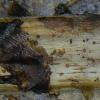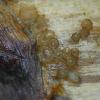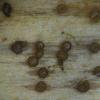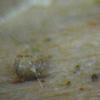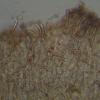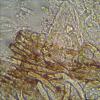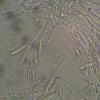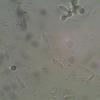
15-12-2025 15:48
 Danny Newman
Danny Newman
Melanospora cf. lagenaria on old, rotting, fallen

15-12-2025 15:54
 Johan Boonefaes
Johan Boonefaes
Unknown anamorph found on the ground in coastal sa

15-12-2025 21:11
 Hardware Tony
Hardware Tony
Small clavate hairs, negative croziers and IKI bb

15-12-2025 07:09
 Danny Newman
Danny Newman
indet. Rutstroemiaceae sp. on unk. fallen leavesMc

15-12-2025 07:05
 Danny Newman
Danny Newman
Pseudosclerococcum golindoi (det: Zotto)near Cosb

15-12-2025 11:49
 Danny Newman
Danny Newman
ITS sequences from the following two collections B

15-12-2025 12:34
 Danny Newman
Danny Newman
indet. Rhytismataceae on oak leafnear Purchase Roa

09-12-2025 12:06
 Andgelo Mombert
Andgelo Mombert
Bonjour,Je recherche l'article concernant Hypobryo
Urceolella
Luc Bailly,
12-06-2012 23:08
Une récolte d'un Urceolella faite en Forêt de Mormal (59) sur rachis morts de fougères (Athyrium ou Dryopteris).
Apoth. subsessile, en grelot puis étalée, brun olivâtre puis beige, excip. plus sombre. Taille -> 0.8 mm.
Spores en pilon ou allantoïdes, hyalines, huile = 2, (6)7.5-12.5 x 2-2.5(3) µ.
Asques courts, peu amincis à la base, 8-sp., bisériés, 34-53 x 5-6.2 µ, crochets douteux (j'ai observé une seule structure douteuse, peut-être tératologique), IKI BB.
Paraphyses un peu réfringentes, cylindriques ou un peu renflées au sommet, x 2-2.2 µ.
Excipulum ectal text. ang., brunâtre par un enduit çà et là. Poils réfringents, avec une lumière très mince sauf à la base et au sommet, (17)36-59 x (3.5)4-5.5 µ, plus ou moins recouverts d'un enduit brun par plaques.
J'en arrive à Urceolella carestiana (Rabh.)Dennis, et plus particulièrement à quelque chose proche de la récolte faite par Zotto portant le n° HB 2011 dans son DVD.
Un avis?
Merci d'avance, amitiés - Luc BAILLY.
Hans-Otto Baral,
12-06-2012 23:17

Re : Urceolella
Hi Luc
I confirm your idea. The strongly curved (slickle-like) hairs are typical, also the rather small spores. I think this is typical U. carestiana. Did you notice the wide lumen at the hair tip? This is a character which is absent from U. winteriana, also from the other two species which do not have a name (III and IV).
Ah, the upper hair on your oil immersion photo shows both hair ends with a wide lumen. One is the apex.
Zotto
I confirm your idea. The strongly curved (slickle-like) hairs are typical, also the rather small spores. I think this is typical U. carestiana. Did you notice the wide lumen at the hair tip? This is a character which is absent from U. winteriana, also from the other two species which do not have a name (III and IV).
Ah, the upper hair on your oil immersion photo shows both hair ends with a wide lumen. One is the apex.
Zotto
Luc Bailly,
13-06-2012 00:17
Re : Urceolella
Hi Zotto,
Absolutely, I noticed the larger lumen at the apex.
Thanks for your comments, and cheers - LUC.
Absolutely, I noticed the larger lumen at the apex.
Thanks for your comments, and cheers - LUC.
